Wooden Cabins
15 Things To Consider

After some weeks, all you want to do on the weekend is to relax a bit. However, all the projects and other work around your house begin to jump in your face. As you begin to tackle those things, you are distracted by phone calls and conversations with the neighbor. Before you know it, the weekend is gone, and you do not relax at all.
What you need is to get away to be able to relax. For some, that is just to the other side of your property, where you have a wooden cabin with a fire pit beside it. For others, the cabin goes on some remote property further away. The important thing is to have a place to relax, giving you the energy to continue with life’s bustle.
What Is The Difference Between A Wooden Cabin And A Log Cabin?
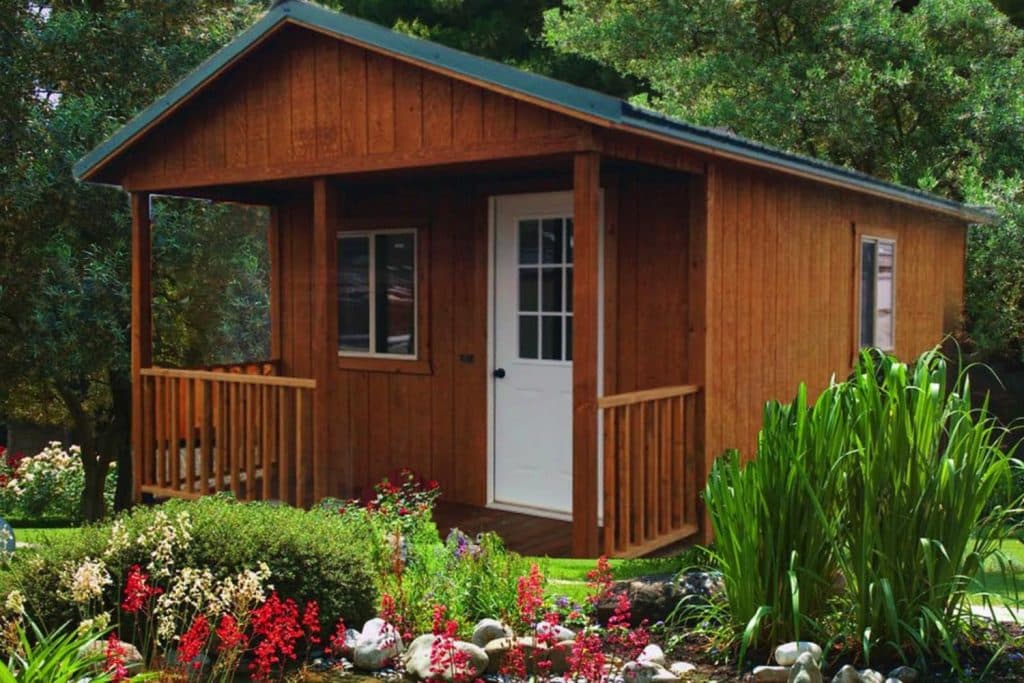
At first, a wooden cabin sounds the same as a log cabin. But, the two have several differences that will affect versatility, cost, and desirability.
- Construction materials. Aren’t they both made of wood? Yes, but a log cabin is made of logs that are stacked on top of each other in order to form walls. At the corners, the logs are notched to form an interlocking pattern. Contrasting this is a wooden cabin, which is simply made of wood products, including beams, plywood, and other types of lumber, using framing and other construction methods.
- Insulation. Log cabins usually do not have any additional insulation because they are solid wood walls. Wood cabins can incorporate added insulation because they have framed walls. Giving you more control over the internal climate.
- Maintenance. Because log cabins use logs that are susceptible to cracking and other issues, they often require more maintenance. Wooden cabins use processed lumber, therefore needing less maintenance.
- Appearance. The most significant difference is appearance. Log cabins have a log wall look, whereas a wooden cabin has the versatility to make it look like several different styles. At Montana Structures, we make three different types of wooden cabins, ranging from a traditional look with the Mt Lair cabin style and the Lofted cabin style to the rustic look of the Outfitter Cabin style.
How Much Does A Wooden Cabin Cost?

Like any type of structure, the price of a wooden cabin can vary a lot and is dependent on multiple factors, particularly the size and extras added. An 8X10 wooden cabin costs around $4,400 and ranges to $18,000 for a 14X36 structure. To get an exact price, request a free quote that we offer for all our wooden cabins. If you like a customized feel, take advantage of our 3D Builder where you can see what it would look like and add extra features.
What Kind Of Foundation Do I Need For My Wooden Cabin?
You may be wondering “Do I need a foundation for my wooden cabin?” Yes, all wooden cabins need some kind of foundation. To maintain your structure for many years, a foundation of some sort is essential. However, the type of foundation that you use will greatly affect both maintenance and stability. Below are several different types of foundations that can be used effectively.
Wooden Cabin Foundation – Concrete Pad
The best foundation that you can have is a concrete pad. Although the most expensive option, this will provide a stable foundation for your wooden cabin. Because it is a solid substance, rodents cannot tunnel underneath your structure, providing a barrier for those pests. Additionally, your shed will be off the ground, keeping moisture away from your building. We recommend putting 3”-4” of crushed stone as a base for the concrete, tamping it well. The stone provides an excellent base for the concrete pad, stabilizing your wood cabin for the long haul.
Wooden Cabin Foundation – Gravel
A gravel area also will work as a second option for a foundation. It may be easier to install and cheaper than concrete, as long as it is well prepared. We recommend that you use at least 4”-6” of crushed stone and make sure it is well-tamped. Here is a blog that steps through the process of creating a gravel shed foundation for your wooden cabin.
Wooden Cabin Foundation – Pavers Or Blocks
For a different option from concrete or gravel, place your wooden shed on pavers or cinder blocks to provide a basic foundation. We don’t recommend using this option because over time, it will settle or shift, causing a corner or side to sag, compromising the structure. However, pavers or blocks will work fine as a temporary or cheap option. But do not use hollow blocks, as they may crack or crumble.
Wooden Cabin Foundation – Ground
If one of the above options is unavailable, setting your cabin on the ground can work, although this is not recommended. To give the best ground foundation, clear an area for your shed and ensure it is perfectly level. We recommend using a tamper to compact the ground to slow settling before setting your shed.
How Can I Protect My Wooden Cabin From Insects And Rot?
Whenever you have a wooden structure, the question must be asked, “How do I protect my cabin from the elements?” Several procedures are listed below to help prevent or slow down the forces of nature. By adopting these practices, you can extend the life of your wooden cabin by years.
How Do I Keep Insects And Rodents Away From My Wooden Cabin?
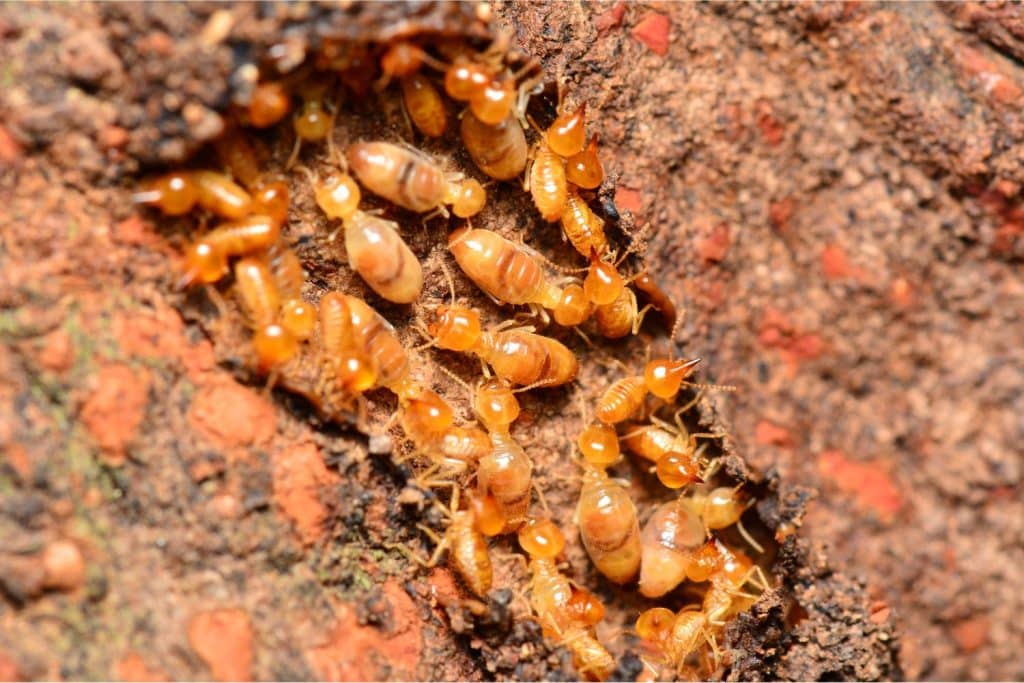
Insects and animals, specifically rodents, like your wooden cabin almost as much as you do. But don’t worry, they are not difficult to scare away. The first thing that you can do is make sure to use a concrete foundation to prevent rodents from burrowing underneath. Secondly, use rodent repellents around the foundation and other parts of your cabin to deter rodents from even getting close to your space. Our favorite is a peppermint oil powder rodent repellent that comes in packets.
Because termites and insects like damp wood, using a concrete foundation that prevents moisture is critical. Using treated lumber for the substructure is very important because insects do not like treated wood. Any regular lumber should be sealed with sealant similar to this Natural Borate Termite and Insect Control repellent that can be brushed directly onto the wooden cabin. Additionally, filling in any holes in the wood with caulk is a good idea.
Here at Montana Structures, our wooden cabins are built using treated lumber for the substructure. Additionally, we paint or stain each wooden cabin, giving you a jumpstart to easily maintain your building.
How Can I Prevent My Wooden Cabin From Rotting?
Wood is a natural substance and is prone to decomposing. The main component of this process is moisture; therefore, the key to preventing decomposition is to prevent the wooden components of your building from holding moisture.
Make sure that your wooden cabin has a treated substructure and is stained or painted to keep the wood materials dry and rot-free. This is the method that we use for all of our buildings.
Again, having a foundation that gets your wooden cabin off the ground is crucial to keep moisture away.
How Long Does A Wooden Cabin Last?
A wooden cabin’s lifespan varies to how well it is built and maintained. A wooden cabin can last easily last 30-50 years if well cared for and longer if the conditions are excellent. At Montana Structures, we offer a 12-year top-to-bottom warranty on our wooden cabins, but we expect our structures to last much longer if maintained properly.
Wooden Cabin Vs. Log Cabins | 15 Things To Consider

Should I get a wooden cabin or build a log cabin? Choosing the right one for you comes down to what you want. There are several things to consider when looking at these two options. We will break down the factors to look at when deciding what type is best for your situation.
1) Wooden Cabins Vs. Log Cabins | Cost
The price gap between a wooden cabin and a log cabin is fairly large. Because a log cabin is larger, needs a footer for the foundation, and is permanent, the costs are significantly higher. Our prefab wooden cabins are built for around $30-$55 a square foot, while the cost of labor and materials for building a log cabin can run between $125-$175 a square foot. Your budget may be a factor in the area of cost.
2) Wooden Cabins Vs. Log Cabins | Structure
Wooden cabins have a simple yet sturdy frame and can be set on a surface concrete pad. Because they tend to be less bulky and intrusive, a wooden cabin can easily be set anywhere you can get a foundation.
Log cabins, on the other hand, are usually larger and more bulky, limiting the places they can be built. Additionally, because they are permanent, they must follow stricter guidelines than moveable buildings. Requirements may include things such as a full foundation, more complicated permitting, and sewer connections.
3) Wooden Cabins Vs. Log Cabins | Regular Upkeep
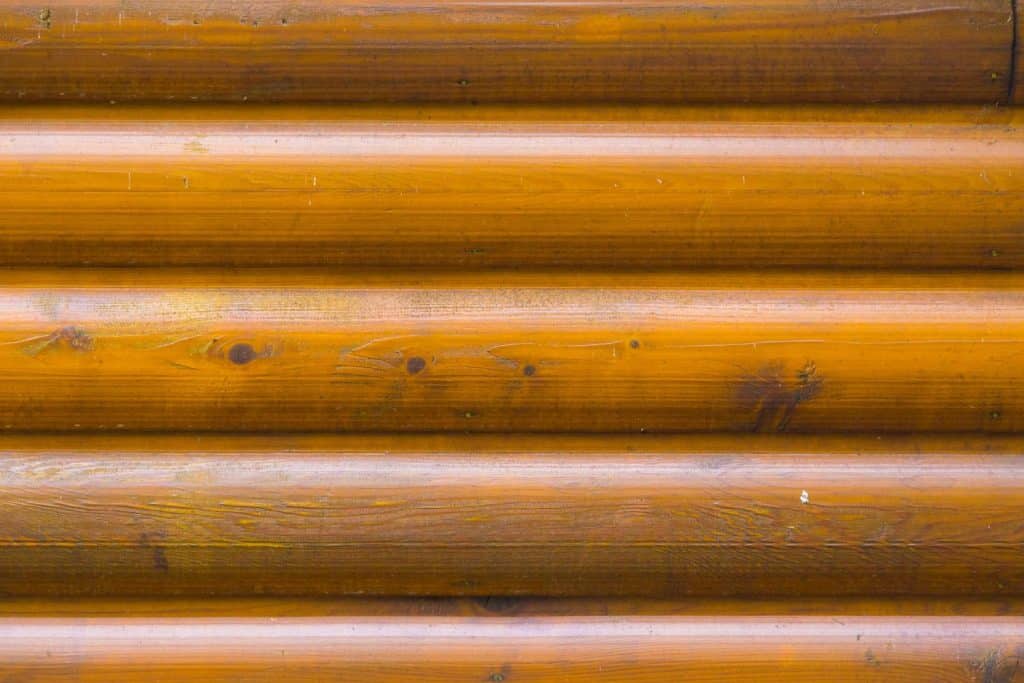
Every building needs some maintenance. However, a log cabin needs more attention than a wooden cabin. Because they use logs instead of processed lumber, the wood is more likely to break down. Simple things like staining the outside of your building take significantly longer when there are individual logs instead of the panels that wooden cabins use. Wooden cabins use processed lumber, which is less messy and needs less maintenance.
4) Wooden Cabins Vs. Log Cabins | Wait Time
Because of the size and permanence, log cabins may take some to build. Getting it into your builder’s schedule and ordering supplies alone can take months before you even start building. A prefab wooden cabin is made offsite, so it can quickly be delivered to your location very quickly. If time is a factor, then a wooden cabin is definitely desirable.
5) Wooden Cabins Vs. Log Cabins | Energy Efficiency
Wood is a natural insulator, so both types have the advantage of being energy efficient. Wooden cabins combine the natural insulation of the wood with other types of insulation to create a high level of efficiency. Log cabins, on the other hand, do not have additional insulation because the walls are solid wood.
6) Wooden Cabins Vs. Log Cabins | Durability
Both can be durable structures with excellent maintenance. Wooden cabins often will outlast log cabins because they use cutting-edge wood products as well as good framing techniques. In contrast to this, log cabins are built a certain way, without the above-mentioned benefits.
7) Wooden Cabins Vs. Log Cabins | Natural Beauty
Log cabins have a great appeal to them; however, you are held to that style with few other alternatives. Wooden cabins can combine the charm of natural wood with other style options. Check out some of the wooden cabin options that we offer at Montana Structures.
8) Wooden Cabins Vs. Log Cabins | Moisture
Moisture is not good for any type of structure, specifically not one built with wood. Moisture causes the wood to begin to rot and disintegrate. Processed lumber tends to be easier to apply sealant, making wooden cabins slightly better with moisture prevention. All the crevices in a log cabin make it more difficult to seal, as well as create a great place to start rotting.
9) Wooden Cabins Vs. Log Cabins | Customization
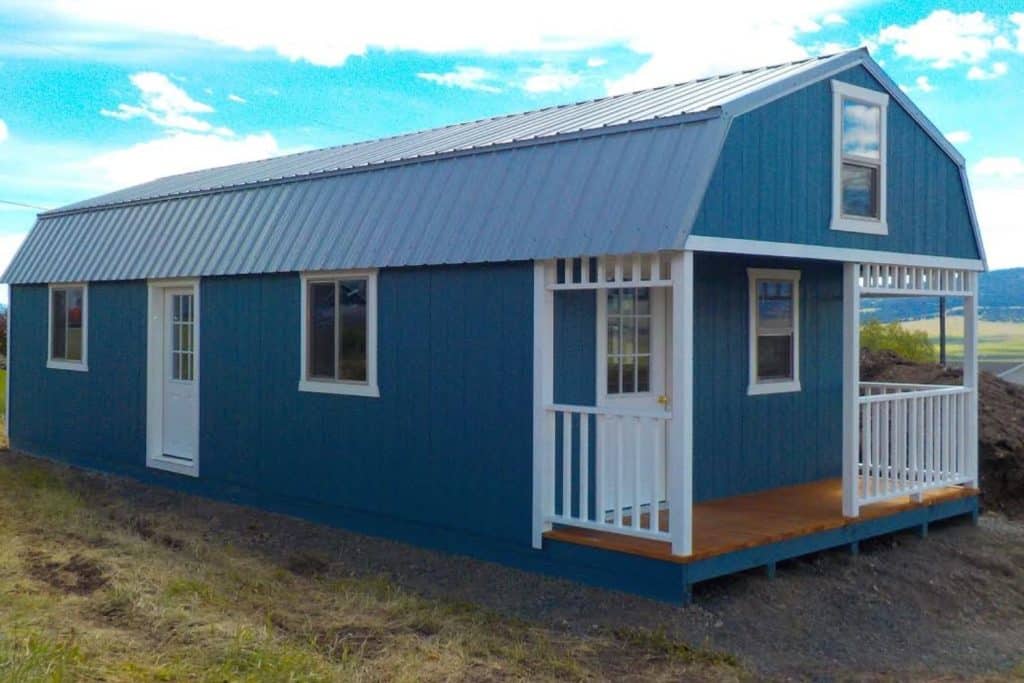
Log cabins all have the same distinct look. Because they are all built the same way, they have a very similar feel. Our wooden cabins can be somewhat customized with multiple paint and stain options. Additionally, you can make your own design for us to build with our 3D Builder. Also, because wooden cabins are framed, they can be easily customized in the future if you would like to add some features, such as an extra door or window.
10) Wooden Cabins Vs. Log Cabins | Versatility
If you like the potential to move your structure, wooden cabins are the way to go because of their portable makeup. This gives you the versatility to change things up in the future. Log cabins cannot easily or cheaply be moved, giving few options once built.
11) Wooden Cabins Vs. Log Cabin | Resale Value
Because log cabins are so much more expensive than wooden cabins, they tend to hold their resale value a little better. It may be easier to sell a log cabin than a wooden cabin, depending on the area you live in.
12) Wooden Cabins Vs. Log Cabins | Insects
All the crevices and cracks in a log cabin create a perfect place for insects to live. Again, the processed lumber in a wooden cabin makes it easier to prevent insects from taking over your building.
13) Wooden Cabins Vs. Log Cabins | Stain and Paint Reapplication
For both, regular reapplication of stain and sealant is a good idea. Stain and sealant are much easier to apply on a wooden cabin because it does not have all the crevices a log cabin has. Over the years, you will save time as you maintain your structure.
14) Wooden Cabins Vs. Log Cabins | Limited Availability
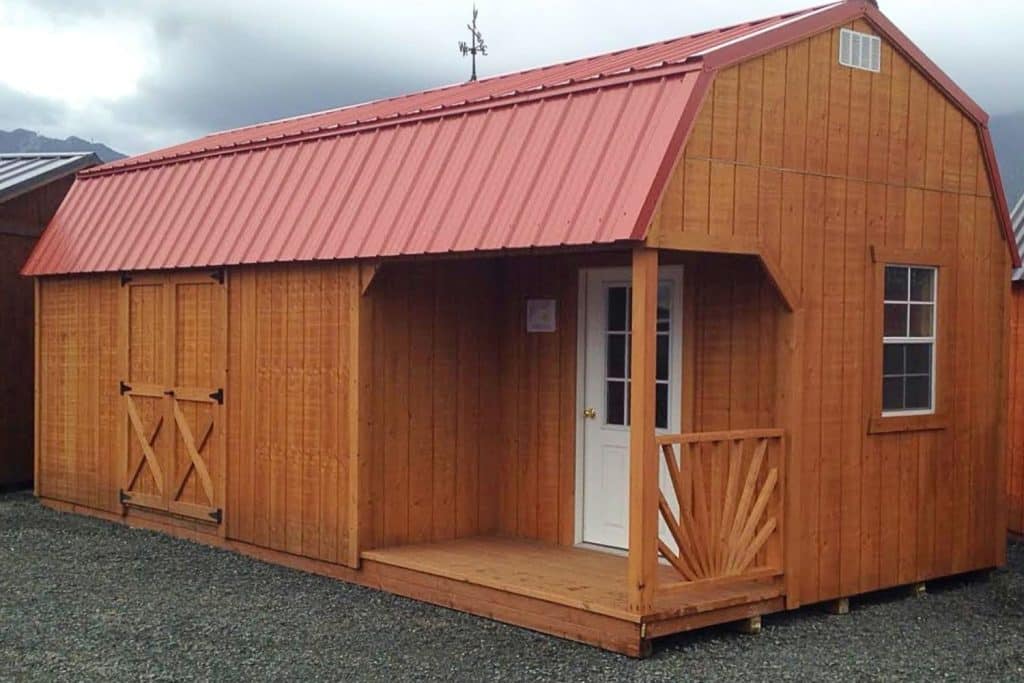
Wooden cabins are much easier to find than log cabins. Companies such as Montana Structures make it very easy to purchase and get the structure to your property.
15) Wooden Cabins Vs. Log Cabins | Foundation
Foundations are necessary for both types of structures. However, log cabins often require a foundation with footers. This alone drives up the cost as well as dragging out the process of construction. Wooden cabins only need a concrete pad, which is much simpler to install.
Wood cabins vs. Log cabins
What is right for you?
We all need a place to relax. But our ideas of the structure that we relax in may differ. If you want something more permanent and larger and don’t mind the extra maintenance, a log cabin may be for you. If you prefer a versatile and unique structure, then a wooden cabin is for you.
As you figure out the correct option for you, take a look at the types of buildings that we offer at Montana Structures. Play around with our 3D Builder or request a free quote for any of our buildings!



